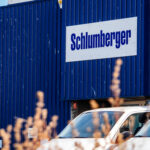RPC, Inc. (ticker: RES) announced today its unaudited results for the fourth quarter and year ended December 31, 2017. For the quarter ended December 31, 2017, revenues increased by 93.4% to $427.3 million, compared to $221.0 million in the fourth quarter of 2016.
For the twelve months ended December 31, 2017, revenues increased by 118.8% to $1.6 billion compared to $729.0 million for 2016.
Net income for the twelve-month period was $162.5 million or $0.75 per diluted share. Net Income excluding the impact of tax reform was $143.2 million, or $0.66 diluted earnings per share, compared to net loss of $141.2 million, or ($0.66) loss per share last year.
According to RPC, revenues increased due to higher activity levels and improved pricing for services, higher service intensity and activation of previously idled revenue-producing equipment.
Operating profit for the quarter was $60.3 million compared to an operating loss of $32.2 million in the prior year. Net income for the fourth quarter was $57.7 million or $0.27 diluted earnings per share.
Tax cuts bring in $19.3 million more
During the fourth quarter of 2017, RPC recorded a net discrete tax benefit of $19.3 million as a component of tax expense, as a result of the Tax Cuts and Jobs Act enacted during the quarter. The benefit resulted primarily from the revaluation of deferred tax items using the lower corporate tax rates, offset by adjustments related to permanent tax law changes, effective January 1, 2018.
Excluding the impact of tax reform, net income for the fourth quarter of 2017 was $38.4 million or $0.18 diluted earnings per share, compared to a net loss of $21.1 million or ($0.10) loss per share last year.
Earnings before interest, taxes, depreciation and amortization (EBITDA) for the quarter was $101.1 million compared to $15.7 million in the prior year.
Cost of revenues, G&A expenses
Cost of revenues during the fourth quarter of 2017 was $285.7 million, or 66.9% of revenues, compared to $173.0 million, or 78.3% of revenues, during the fourth quarter of last year. Cost of revenues increased primarily due to higher employment costs and materials and supplies expenses, both of which were driven by higher activity levels, RPC said. As a percentage of revenues, cost of revenues decreased due to leverage of higher revenues over direct employment costs and improved pricing for services.
Selling, general and administrative expenses were $42.0 million in the fourth quarter of 2017 compared to $35.8 million in the fourth quarter of 2016. These expenses increased due to higher compensation costs, primarily incentive compensation, as well as other expenses consistent with higher activity levels and improved profitability, the company said.
President and CEO Hubbell provides commentary
“The average U.S. domestic rig count during the fourth quarter of 2017 was 921, an increase of 56.4% compared to the same period in 2016, but a decrease of 2.6% compared to the third quarter of 2017,” said RPC President and CEO Richard A. Hubbell. “The average price of natural gas during the fourth quarter was $2.90 per Mcf, a 4.6% decrease compared to the prior year and a 1.7% decrease compared to the third quarter of 2017. The average price of oil during the fourth quarter was $55.37 per barrel, a 12.4% increase compared to the prior year and a 15.1% increase compared to the third quarter of 2017.
“Compared to the prior year, RPC’s fourth quarter 2017 revenues increased at a rate greater than the change in these industry metrics because of high demand for oilfield service providers capable of operating in highly service-intensive environments. On a sequential basis, our revenues decreased at a greater rate than would be implied by industry metrics because of higher than expected seasonal slowdowns.
“We recognize that RPC’s fourth quarter results interrupted the strong trends of the past several quarters, however, we are pleased with full year 2017 results. We believe that higher oil and natural gas prices, as well as larger macro trends in global supply and demand, will encourage our customers to continue to increase their activities during 2018. During the fourth quarter of 2017, we continued to recruit and train employees to staff additional equipment that we anticipate placing in service during the second quarter of 2018 to meet accelerating market demand. RPC finished the fourth quarter with $91.0 million in cash. Capital expenditures during the quarter were $42.5 million, directed toward both maintenance of our equipment and initial payments on new revenue-producing equipment.
“Since the majority of RPC’s business is domestic, we expect the recently enacted tax reform to have a meaningful positive impact on our financial results through increased earnings and operating cash flow in 2018. We estimate our annual effective tax rate in 2018 will range from 20 to 25%,” concluded Hubbell.
Conference call Q&A
Q: Can you talk about fleet utilization and where that was in Q4?
VP of Corporate Finance James “Jim” Landers: Utilization – fleet utilization in pressure pumping was the main catalyst for the sequential revenue decline. Pricing actually improved a little bit, and from that, revenue, not profitability at this point. Pricing actually improved a bit, but there was extreme seasonality, December, as you might expect, was the worst month of an otherwise good quarter.
We had some customers who told us in late November that they were running out of their budgets. And then we’re giving people – the month off, we did have some weather impact in North Dakota. But the majority of it, which is people saying, we’re out of our budget right now and we’re just really slowing down during December.
We chose not to fill up the calendar with lower margin work because that would make 2018 a little bit harder. We’ve been trying to educate customers about higher pricing for us to provide a good service to them and just felt that trying to fill up the calendar with lower margin work was not the right long-term decision. So, it really was utilization – utilization absolutely fell off.
CFO, VP and Treasurer Ben Palmer: I would say that with our business model and with our customer base that there is a lot of movement that goes on. And so it happens the customers slow down and start up and part of our focus is to try to get aligned with our portfolio of customers to get us as fully utilized as possible and as you can imagine, given light in the fourth quarter or given seasonal holidays, weather or all those other things, that was much more of a challenge to try to fill the calendar up.
And as Jim said, we didn’t want to – we weren’t going to run out and offer large discounts to get to work, we thought that over the long-term would be detrimental. So we were impacted – the way we were impacted, and you asked the question about how is the calendar looking at this point, and it is filling back up nicely.
Certainly, it’s always when there are seasonal impacts, there will be a ramp-up, but we are very comfortable with 2018 and – several of the comments we made about higher oil prices and strong customer demand, and all those other things we are very – we’re still very optimistic about 2018.
And what we’re focused on is how we perform over time. We all know and we understand that people are shocked about the way the quarter is. But we look back over the last – certainly the last three quarters, and even the full year of ’17 and we feel really good about the way ’17 turned out.
And we think once results were posted, we think our results will match up favorably over that time period and we feel good about 2018 and we feel good about the first quarter, so we’re not worried about it. It didn’t turn out exactly like we hoped it would, but we’re not overly concerned about it.
Q (continued): And then the incrementals on that activity ramp through the first quarter, is it fair to book it in on the low-end, at 30% incrementals, or to the high end of 40%?
Landers: There are actually a few more wiggles there if you think about incrementals. One reason for the margin decline in fourth quarter was that we’ve hired and trained a lot of people. Ben just mentioned, I think, that our employee count – headcount increased by 6%. So we’re actually looking for higher incrementals, if that’s your question.
Q4 to Q1 incrementals, we look for them to be higher than in the 40% range. We don’t know how much higher right now, it depends on the ramp-up, as Ben mentioned, but we anticipate nice incrementals in the first quarter.
Q: Halliburton noted that costs had been an issue and they called out regional sand. That’s a positive for people in the hydraulic fracturing business in the Permian, later this year, as that sand comes on. Can you talk about what your sand business is doing and what you’re seeing in the sand business? Did you make more money than you thought or not make as much money as you thought in sand? Can you talk about how that impacted Q4?
Landers: We have not used any regional sand in the Permian yet. We’ve talked to our suppliers and they are lining up to provide us with regional sand, if that’s what our customers want, and we are willing and happy to do that, if that’s where we go. We are aware of what other people talked about in terms of cost inflation. We have not seen it in trucking specifically.
In fact, our demurrage expense is minimal and it even declined in the fourth quarter, even as a percentage of revenue or as the percentage of total cost. Sand did not really increase much during the quarter.
Q: Can you help us think about, say when we get toward the end of the year, what the priorities would be for the cash on the balance sheet? Would you still look at new build opportunities at this point in the cycle or would you squint a little harder maybe on the shareholder return side?
Palmer: Good question. We have not made those decisions at this point in time. I think that the capacity adds that we have on order now equate to about a 15% increase in our capacity and we expect, from actual capacity increase in terms of fleets, we’re probably looking at something more like in the mid-single digit.
So we make some, more like 5%, rather than 15% improvement in our capacity, and that will allow us to consistently work on larger and more intense jobs, which is a net positive, but it won’t result in a 15% increase in our number of fleets.
That’s also to say that I would not be surprised for us at the end of 2018, that we maybe have not repurposed – retired and/or repurposed some of our frac pumps into the some of the – some of our less intensive service lines, which would then say that we would look to maybe placing some more orders.
We don’t have any commitments at this point in time for any capacity beyond what we’ve already announced. But I expect there will be a serious consideration for us in the coming months to be looking at that.
So from that perspective, we’re always looking for a healthy balance and I think that’s what we’ll actually do, but I expect there will be continued investment in our pressure pumping fleet and question whether there will be a net increase in our capacity with whatever additional order room we do over the next several quarters. But I expect there will be some more orders placed.
Technical and support services’ operating performance
Technical services revenues increased by 96.0% for the quarter compared to the prior year due to improved pricing, higher activity levels and a larger active fleet of revenue-producing equipment as compared to the prior year, particularly within the company’s pressure pumping service line, which is the largest service line within technical services.
Support services revenues increased by 43.7% during the quarter compared to the prior year due primarily to improved activity levels and pricing in the rental tool service line, which is the largest service line within this segment.
Technical services reported an operating profit during the quarter compared to an operating loss in the prior year, while support services reported a smaller operating loss for the fourth quarter of 2017 as compared to the prior year.
Financial summary
| RPC INCORPORATED AND SUBSIDIARIES | |||||||||||||||
| CONSOLIDATED STATEMENTS OF OPERATIONS (In thousands except per share data) | |||||||||||||||
| Periods ended, (Unaudited) | Three Months Ended | Twelve Months Ended | |||||||||||||
| December 31,
2017 |
September 30,
2017 |
December 31,
2016 |
2017 | 2016 | |||||||||||
| REVENUES | $ | 427,299 | $ | 470,999 | $ | 220,997 | $ | 1,595,227 | $ | 728,974 | |||||
| COSTS AND EXPENSES: | |||||||||||||||
| Cost of revenues | 285,731 | 294,820 | 173,020 | 1,050,809 | 607,888 | ||||||||||
| Selling, general and administrative expenses | 42,011 | 39,738 | 35,827 | 159,194 | 150,690 | ||||||||||
| Depreciation and amortization | 38,024 | 39,587 | 48,367 | 163,537 | 217,258 | ||||||||||
| Loss (gain) on disposition of assets, net | 1,249 | (503) | (4,001) | (4,530) | (7,920) | ||||||||||
| Operating profit (loss) | 60,284 | 97,357 | (32,216) | 226,217 | (238,942) | ||||||||||
| Interest expense | (104) | (105) | (115) | (426) | (681) | ||||||||||
| Interest income | 466 | 488 | 171 | 1,494 | 467 | ||||||||||
| Other income (expense), net | 2,745 | 564 | (478) | 5,531 | (204) | ||||||||||
| Income (loss) before income taxes | 63,391 | 98,304 | (32,638) | 232,816 | (239,360) | ||||||||||
| Income tax provision (benefit) | 5,688 | 40,970 | (11,531) | 70,305 | (98,114) | ||||||||||
| NET INCOME (LOSS) | $ | 57,703 | $ | 57,334 | $ | (21,107) | $ | 162,511 | $ | (141,246) | |||||
| EARNINGS (LOSS) PER SHARE | |||||||||||||||
| Basic | $ | 0.27 | $ | 0.26 | $ | (0.10) | $ | 0.75 | $ | (0.66) | |||||
| Diluted | $ | 0.27 | $ | 0.26 | $ | (0.10) | $ | 0.75 | $ | (0.66) | |||||
| AVERAGE SHARES OUTSTANDING | |||||||||||||||
| Basic | 216,574 | 216,958 | 214,270 | 217,194 | 214,227 | ||||||||||
| Diluted | 216,574 | 216,958 | 214,270 | 217,194 | 214,227 | ||||||||||
Additional financial details can be found here.







